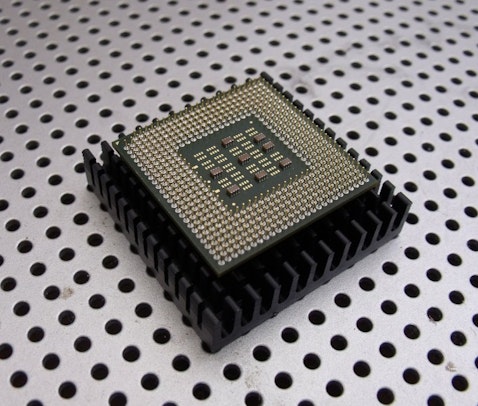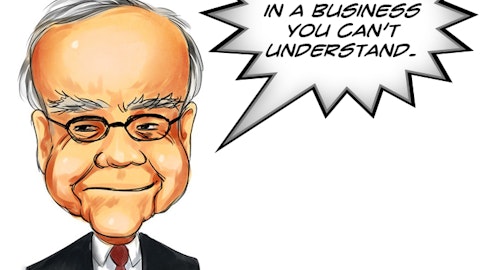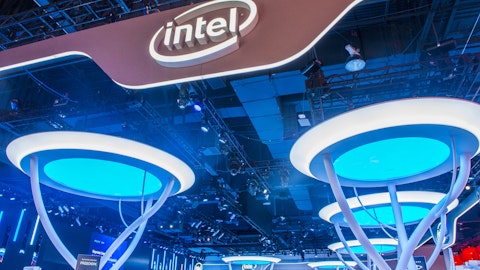It’s widely known that the semiconductor industry acts as a driver and indicator of the technological progress. The development in the following industry determines the way people work, commute, communicate and entertain, among other things; a lot of things that surround us use semiconductor devices. However, the outlooks for a range of applications that drive the semiconductor market, such as PCs, smartphones and tablets, have seen downward revisions this year. A strong U.S. dollar has also put pressure on the industry, so hedge funds have started to pull their money out of semiconductor stocks. In this article, we’ll discuss some semiconductor stocks that have witnessed an increase of hedge fund activity lately, including: Micron Technology Inc. (NASDAQ:MU), Applied Materials Inc. (NASDAQ:AMAT), Intel Corporation (NASDAQ:INTC), Cypress Semiconductor Corporation (NASDAQ:CY).

Why do we pay attention to hedge fund sentiment. Most investors ignore hedge funds’ moves because as a group their average net returns trailed the market since 2008 by a large margin. Unfortunately, most investors don’t realize that hedge funds are hedged and they also charge an arm and a leg, so they are likely to underperform the market in a bull market. We ignore their short positions and by imitating hedge funds’ stock picks independently, we don’t have to pay them a dime. Our research has shown that hedge funds’ long stock picks generate strong risk adjusted returns. For instance the 15 most popular small-cap stocks outperformed the S&P 500 Index by an average of 95 basis points per month in our back-tests spanning the 1999-2012 period. We have been tracking the performance of these stocks in real-time since the end of August 2012. After all, things change and we need to verify that back-test results aren’t just a statistical fluke. We weren’t proven wrong. These 15 stocks managed to return more than 123% over the last 35 months and outperformed the S&P 500 ETF (SPY) by 66 percentage points (see more details here).
Micron Technology Inc. (NASDAQ:MU) is the most popular semiconductor stock, in which 79 funds held long positions at the end of June, down by 21 from the previous quarter. By the same token, the value of their total investments in Micron decreased to $3.73 billion from $6.96 billion during the quarter. The stock of the semiconductor devices provider has dropped by almost 52% year-to-date, as the company faced significant challenges with its 20nm DRAM. Micron has been attempting to gain more market share from Samsung for its 20nm DRAM by setting lower prices, but Samsung started the mass-production of DRAM using the 20nm fabrication process well ahead of Micron, so the latter has had a hard time competing. David Einhorn’s Greenlight Capital is a shareholder of Micron Technology Inc. (NASDAQ:MU), holding 37.95 million shares with a market value of $640.98 million.
Let’s now move on to Applied Materials Inc. (NASDAQ:AMAT), which is a global leader in materials engineering solutions for the semiconductor, flat panel displays and solar photovoltaic industries. At the end of the second quarter, 65 investors within our database held shares of Applied Materials with a total value of $2.47 billion, versus 81 funds holding $4.36 billion worth of stock at the end of March. Applied Materials shares shed to the lowest level since the beginning of 2014, losing 33% in 2015, so bottom-fishing investors might see the stock as a good buying opportunity. The company has recently posted its financial results for the third fiscal quarter ended July 26, reporting net sales of $2.49 billion, up by 10% year-over-year, while its non-GAAP adjusted earnings per share came at $0.33, marking an increase of 18% on the year. Larry Robbins’ Glenview Capital is bullish on Applied Materials Inc. (NASDAQ:AMAT), increasing its stake by 7.82 million shares during the quarter to 21.28 million shares.
The number of hedge funds invested in Intel Corporation (NASDAQ:INTC) stood at 48 at the end of the June, down by 13 from the previous quarter. Also, the value of their stakes in the company decreased by 19% to $4.21 billion. Intel has seen its stock decline by 20% since the start of 2015, but some analysts believe that there is some upside potential in the near future. It has been recently rumored that Intel is set to capture approximately 50% of Apple Inc. (NASDAQ:AAPL)’s modem business in the iPhone 6s product cycle. Assuming that the rumors are true and Intel can actually capture half of the modem business for the iPhone 6s, the chipmaker might generate revenues in the range of $750 million to $1.25 billion, which represents a much-needed boost for Intel. Meanwhile, Harris Associates LP, which is among the 737 funds that we track, owns a stake of 63.84 million shares in Intel Corporation (NASDAQ:INTC) according to its most recent 13F filing.
Last but not least, Cypress Semiconductor Corporation (NASDAQ:CY) is a semiconductor stock, in which 35 funds held long positions at the end of June, down by four during the quarter, whereas the aggregate value of their holdings decreased to $1.03 billion from $1.07 billion. Cypress Semiconductors has recently announced the divestiture of its TrueTouch mobile touchscreen business to Parade Technologies Ltd. The divestiture allows Cypress to sustain its focus on the embedded automotive and industrial markets. At the same time, $100 million in cash generated from the deal will most likely enhance the capacity for shareholder returns. Let’s not forget to mention that the stock of Cypress has dropped by almost 29% year-to-date. Soros Fund Management, founded by the reputable investor George Soros, holds a stake worth $162.03 million in Cypress Semiconductor Corporation (NASDAQ:CY), which contains 15.87 million shares.
Disclosure: None





